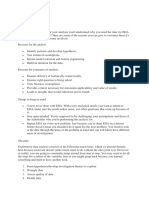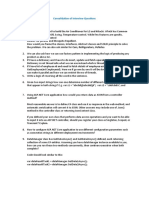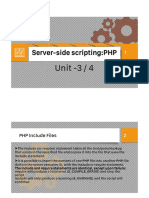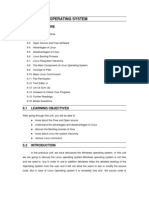0% found this document useful (0 votes)
27 views3 pagesData Analytics Interview Questions
The document outlines key steps in an analytics project, including understanding the problem, collecting and cleaning data, analyzing it, and interpreting results. It also discusses common challenges faced by data analysts, essential technical tools for analysis and presentation, and best practices for data cleaning. Additionally, it highlights the significance of Exploratory Data Analysis (EDA) in uncovering patterns and insights within data.
Uploaded by
Vyom SrivastvaCopyright
© © All Rights Reserved
We take content rights seriously. If you suspect this is your content, claim it here.
Available Formats
Download as DOCX, PDF, TXT or read online on Scribd
0% found this document useful (0 votes)
27 views3 pagesData Analytics Interview Questions
The document outlines key steps in an analytics project, including understanding the problem, collecting and cleaning data, analyzing it, and interpreting results. It also discusses common challenges faced by data analysts, essential technical tools for analysis and presentation, and best practices for data cleaning. Additionally, it highlights the significance of Exploratory Data Analysis (EDA) in uncovering patterns and insights within data.
Uploaded by
Vyom SrivastvaCopyright
© © All Rights Reserved
We take content rights seriously. If you suspect this is your content, claim it here.
Available Formats
Download as DOCX, PDF, TXT or read online on Scribd
/ 3























































































